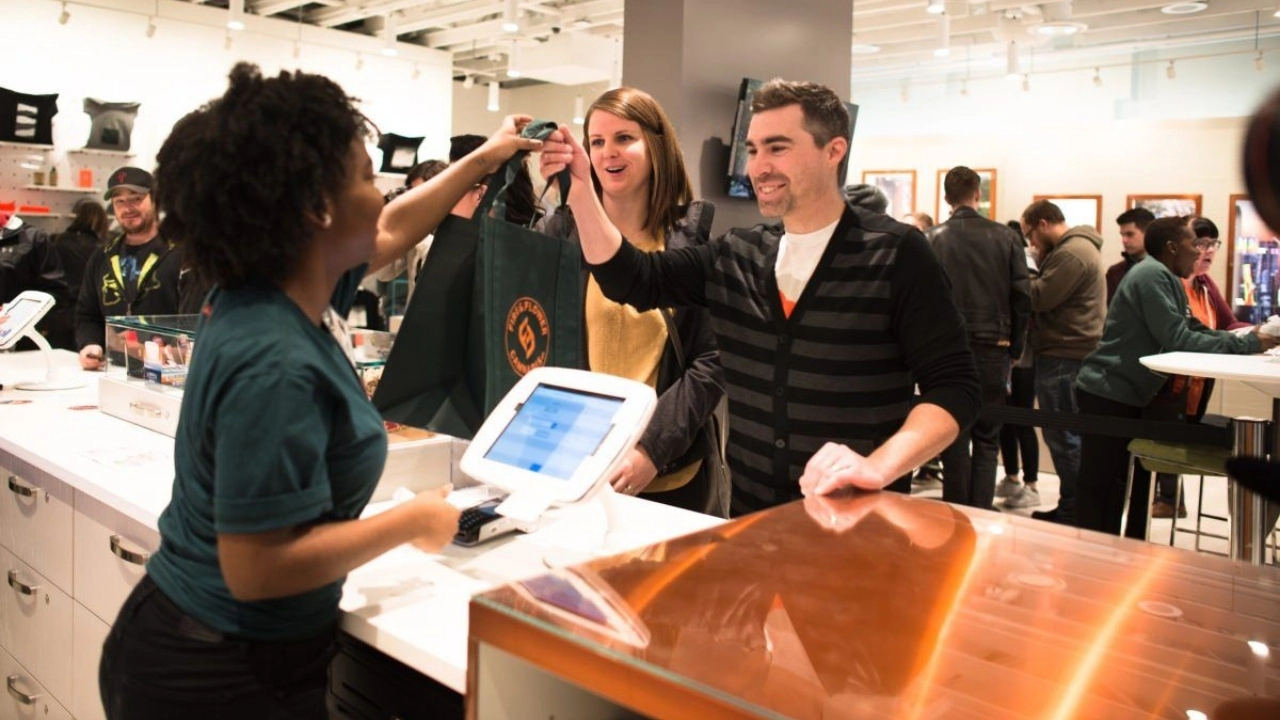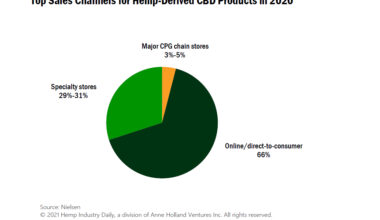Cannabis operators are watching an unexpected consumer shift transform retail.
Gen Z, the industry’s youngest legal consumers, are coming in to buy. They’re just navigating cannabis with more intention and selectivity than other buyers.
“Very few people are coming in just to get blasted,” says Adrienne Airhart, director of operations at The Higher Path and The Other Path, two Los Angeles cannabis stores.
“Gen Z is using THC to work out, to study, to get through social anxiety. It’s part of their routine.”
As Gen Z’s buying habits break from the consumption patterns cannabis retailers have relied on for years, this intentional approach is influencing product mix, pricing strategy and education at the sales counter at retailers looking to grow sales.
It’s also countering the conventional wisdom that since younger adults report using less cannabis, operators should focus on other demographics.
And it’s giving operators an avenue for growth that isn’t reliant on sitting around and waiting for heavier use patterns to appear.
Cannabis’ real generational divide
Recent consumer research shows clear generational differences in cannabis consumption that matter for retail planning.
Older adults continue to embrace cannabis at accelerating rates. According to a recent poll, one in five adults 50 and over now uses cannabis. Most cite relaxation, sleep, pain relief and mental health as their primary motivations.
Millennials, now in their peak earning years, remain the core spenders in legal cannabis, according to Headset’s demographic data.
Their habits are steady: they buy frequently, shop across formats and lean toward practical, comfort-driven products such as edibles, vapes, topicals and value flower.
Meanwhile, Gen Z is coming of age in an era defined by wellness culture, rising anxiety awareness and a broader pullback from intoxicants.
Consistent with this context, Gallup and other national surveys show younger adults are drinking less than older generations, reflecting a preference for substances that feel lighter, cleaner and easier to integrate into daily routines.
And that includes cannabis.
Gen Z’s complicated relationship with cannabis
Gen Z faces the highest financial stress of any generation. More than half of respondents to a recent poll said they are “extremely worried about not having enough money,” according to the American Institute of Stress.
The high cost of housing, constant inflation and student loan pressure push cannabis firmly into the discretionary spending category. Young consumers make smaller purchases and visit stores less often.
But they still want cannabis. 69% of adults aged 18–24 prefer cannabis to alcohol, and 56% say they’re replacing alcohol with THC, most often through lower-dose edibles and beverages.
Many use cannabis only in specific contexts, prioritizing predictability over heavy use and planning around events, activities and budgets.
That’s also generational. Budget constraints play a major role, but so does cultural pressure.
Cali sober and high THC: What Gen Z wants from legal cannabis retailers
The Higher Path’s Airhart described the rise of “Cali sober” and a shift in what’s considered socially acceptable.
“Weed is still cool, but smoking isn’t so much,” she said. “Intentional use is obvious.”
“They’re treating cannabis as part of self-care, budgeting carefully, watching for deals. Honestly, it’s part of the young American experience.”
Younger shoppers arrive far more educated. They regularly ask about cannabinoids and terpenes and often come in seeking specific effects, she said.
Secondary cannabinoids like THCV, marketed by some as a functional THC focus aid, and CBG, viewed as a mood-lifting alternative to pharmaceutical prescription drugs like SSRIs, have become particularly popular among this group.
Merchandising has shifted accordingly.
The Higher Path created a dedicated low-dose section in response to rising demand for predictable, low-intoxication products, something that didn’t exist a few years ago.
Basket mix reflects the same move toward intentional, social-friendly use. Larger-format preroll jars – such as the shop’s 14-gram party packs – sell well to younger adults seeking lighter social effects, anxiety relief or a focused boost.
And Gen Z isn’t ditching THC altogether.
“The younger crowd is definitely still looking for high THC,” she said, “but they’re not just buying flower and vapes anymore.”
“They want a big punch for a dose; otherwise, what’s the point?”
What the data says about Gen Z and the future
Broadly, trends show a shift toward lighter, controlled consumption.
Headset’s demographic data shows that Gen Z spends less per trip, shops less frequently and buys lower-dose SKUs at higher rates than older consumers.
Flowhub trends, summarized in the Hybrid Marketing 2025 report, suggest younger adults favor beverages, gummies and wellness-oriented product types while purchasing inhalables at comparatively lower rates.
Gen Z also leans toward vape pens for discreet dosing, low-dose edibles and beverages for microdosing and tinctures, softgels and topicals that align with structured self-care, according to FlowHub.
And Gen Z also avoids candy-like or “party-forward” branding, preferring products that resemble legitimate wellness goods.
However, since only the upper half of the cohort (ages 21–27) can legally purchase these products, these trends serve as early yet meaningful indicators of how future demand may evolve.
How the cannabis industry can grow up with Gen Z
Gen Z’s buying habits have created space for new conversations, more informed customers and a broader range of products that meet people where they are. That gives retailers room to grow with their audience rather than chase after it.
Stores that lean into education, effect-based merchandising and routine-friendly SKUs may find that these expectations support steadier, more predictable demand.
And because many younger shoppers still want high THC when it offers longer-lasting value, brands that design around value, control and purpose may be best positioned as this generation grows into full purchasing power.
Cannabis retailers like Airhart see the opportunity presented by Gen Z isn’t in waiting for heavier use to return. It’s in evolving their product strategy and education to match a lighter, more intentional consumer base.
Medical Disclaimer:
The information provided in these blog posts is intended for general informational and educational purposes only. It is not a substitute for professional medical advice, diagnosis, or treatment. Always seek the advice of your physician or other qualified healthcare provider with any questions you may have regarding a medical condition. The use of any information provided in these blog posts is solely at your own risk. The authors and the website do not recommend or endorse any specific products, treatments, or procedures mentioned. Reliance on any information in these blog posts is solely at your own discretion.






